- Home
- Finops
FinOps
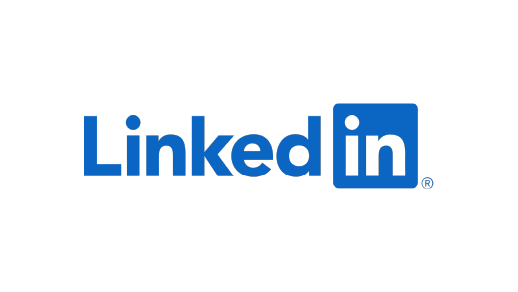



Gain clarity and optimize cloud spend
multi-cloud cost visibility
faster resolution of inefficiencies
savings in cloud spend
Key capabilities
FinOps made easy
Advisory per one click
Identify anomalies, control costs
First showback, then chargeback
Focus on holistic cost optimization
Better collaboration among stakeholders
How does FinOps help manage cloud costs?
Your benefits: Coud operations, enhanced and under control
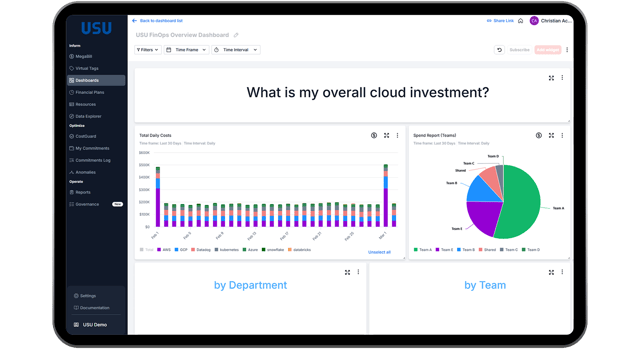
Achieve multi-cloud visibility
Get comprehensive cloud visibility at your fingertips. With full transparency across your multi-cloud environment, you can bring all your data together in one place. Consolidated reports and dashboards make it easy to see where your money’s going—and where you can save. We support seamless integration with AWS, Azure, Google Cloud Platform and Oracle Cloud Infrastructure, as well as tools like Kubernetes, Datadog, Databricks, Snowflake and more. So you stay in control of all your cloud costs, all the time.
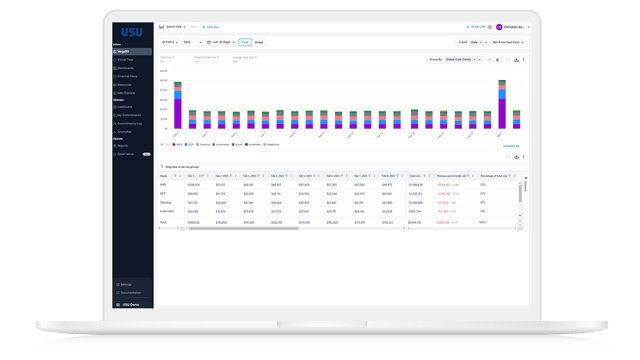
Ensure accurate cost allocation
Understand how your cloud budget is really being used—and make sure every dollar is accounted for. With 100% cost allocation, including shared expenses like support, data lakes or shared resources, you get the full picture. Use Virtual Tags to easily set up complex business rules and allocate costs exactly where they belong. You can even drill down to the Pod level in Kubernetes. Spot and fix incorrectly tagged resources, and enable internal chargeback processes that keep spending transparent and fair across your teams.
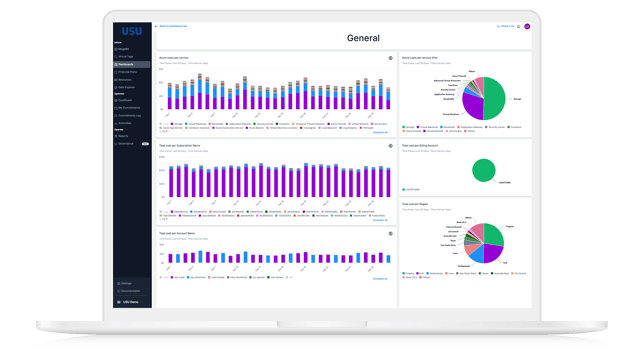
Showback & chargeback
Make cloud usage a team effort by raising awareness and putting accountability in the hands of your users. With insights tailored to each stakeholder, you empower teams to make smarter, data-driven decisions. Share the right information with the right people through integrations with tools like Email, Teams and Slack. Everyone gets what they need—when they need it. Role-based access to an interactive, easy-to-use portal ensures each team sees only what’s relevant to them, keeping things simple and focused.

Mission: Reducing Cloud Costs with FinOps
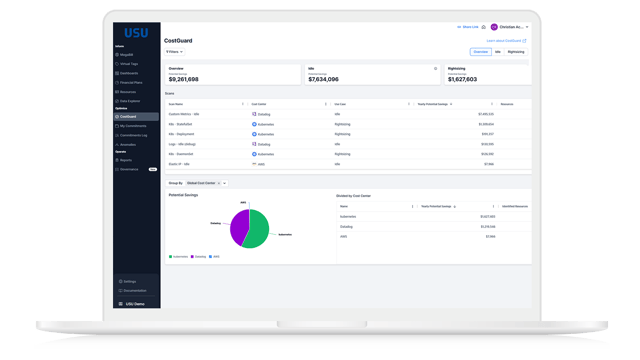
Optimize your cloud spend
Turn your cloud spend into real business growth. Uncover cost-saving opportunities by choosing the right pricing models and eliminating waste like unused resources. Tap into savings with options such as reserved instances, savings plans, commitments, rightsizing or autoscaling. Track your progress, measure key KPIs, and share the results—so everyone sees the value and impact of smarter cloud decisions.
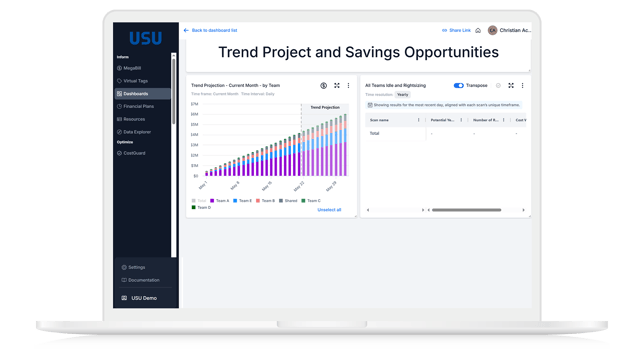
Budgeting & forecasting
Maximize the value of your cloud investments by putting financial planning at the center of your strategy. Use historical and seasonal data to build smarter budgets, and track spending by any business unit. Keep everyone in the loop with clear communication and shared accountability across teams. Real-time insights and smart alerts help you stay on track, make informed decisions and adjust forecasts as needed—so your cloud strategy stays aligned with your business goals.
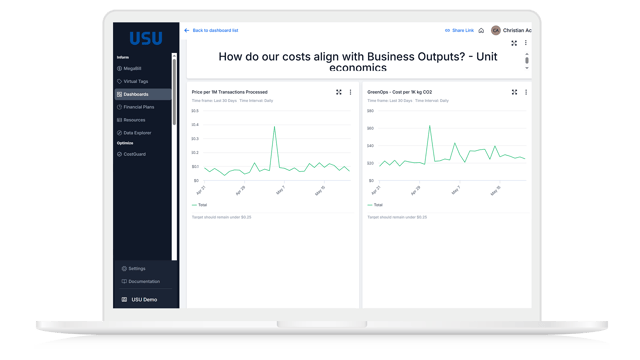
Cloud unit economics
Start measuring the value of your cloud—not just the costs. By linking cloud spend directly to business outcomes, you get a clearer picture of what’s really driving growth. Define, track and share key KPIs right within the platform, from cost per transaction to cost per customer or document. With cloud unit economics, companies have seen up to 30% more efficient resource allocation and faster decision-making across teams. When you understand the cost of each business activity, it’s easier to optimize, scale and prove the impact of every cloud dollar.
FinOps Managed Services and Enterprise Support
Service initiation & implementation support
Regular review meetings with our experts
Ongoing data quality management
Unleash Business Value with FinOps and Cloud Cost Management


Get in touch with an expert
Do you have questions about our offering? A quick call can be way more helpful than a long email chain. Talk to one of our experts to explore our products and see them in action.

Brian Riley
Sales Development
We are here to help
Send us a message
No matter if you like to partner with USU or just have a few questions.
Frequently Asked Questions
Cloud Cost Management vs. FinOps—where's the difference?
Cloud cost management (CCM) is all about monitoring, measuring and optimizing cloud ROI. The goal is to achieve full visibility into cloud costs while keeping services running smoothly—and spending only what’s necessary. FinOps takes this a step further. While cost savings are important, FinOps focuses on the bigger picture—analyzing how cloud costs impact every department and ensuring organizations get the most value from their investments.
What do CCM and FinOps have in common?
That’s why both CCM and FinOps prioritize efficiency. A key best practice? Shutting down idle compute instances and eliminating those that don’t drive business value. This simple step can lead to significant savings—without sacrificing performance.
What is cloud spend management?
Cloud spend management involves the processes and tools used to monitor, analyze and control the costs associated with cloud computing. It aims to ensure that cloud resources are utilized efficiently, helping organizations avoid overspending while maximizing cloud investments.
Why is cloud cost management so difficult?
Cloud cost management is challenging due to the complexity and dynamic nature of cloud environments. The decentralized nature of cloud resource provisioning can lead to shadow IT and unmonitored costs.

.jpg?width=296&height=197&name=2024-10-28_usu_finops-kampagne_webinar_preparation-2025_lp-header_1920x1080px%20(1).jpg)


